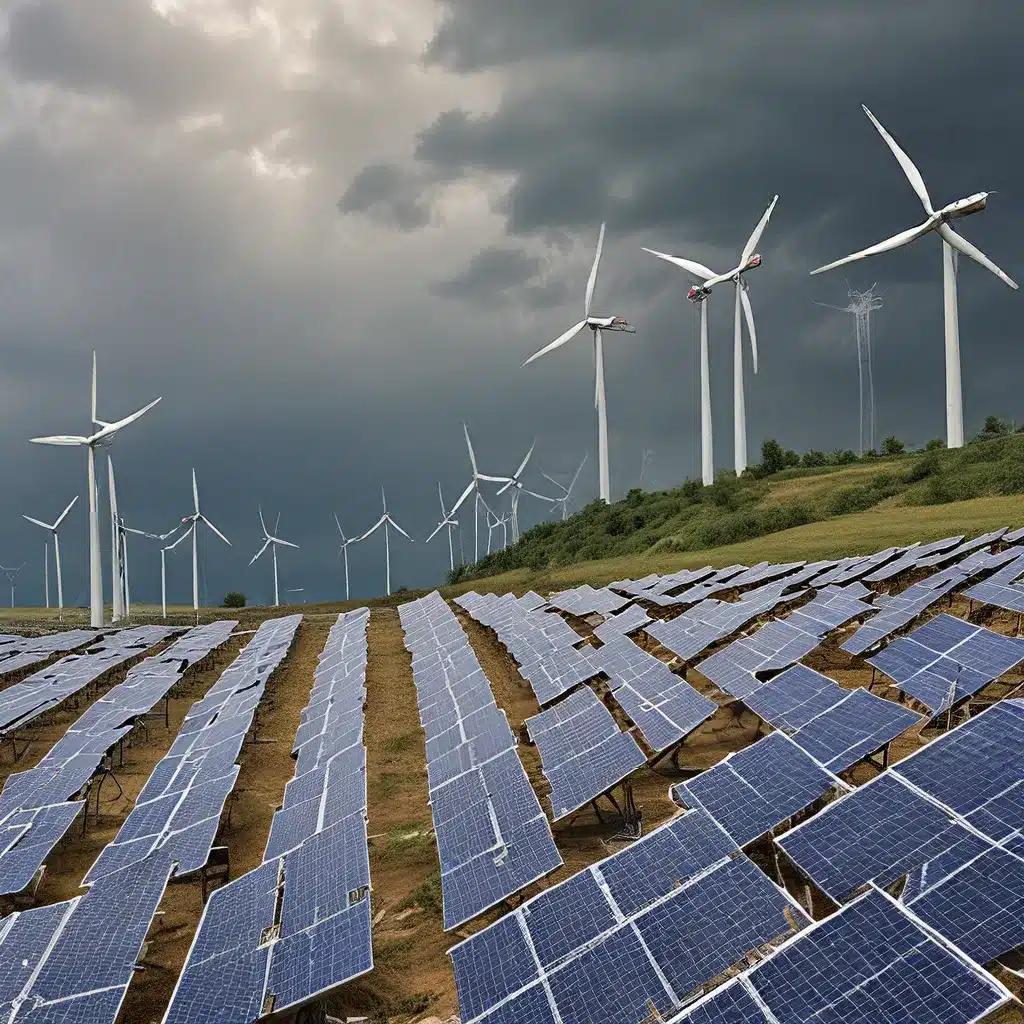
As someone who’s lived through my fair share of natural disasters, I know firsthand the importance of building resilience in our communities. And let me tell you, when it comes to disaster preparedness, renewable energy is quickly becoming a game-changer.
Powering Through the Storm: The Role of Renewable Energy
Imagine this: you’re hunkered down during a raging hurricane, the winds howling and the rain pounding. Suddenly, the lights go out. No more Netflix binging, no more charging your phone – just darkness and the sound of a generator chugging away. Sound familiar? Well, that’s the reality for far too many people when disaster strikes.
But what if I told you there’s a better way? Renewable energy, my friends, is the key to keeping the lights on and the devices charged even when the grid goes down. Solar panels, wind turbines, and battery storage systems can provide a reliable source of power that’s not dependent on the traditional infrastructure.
In fact, a recent study found that communities with higher levels of renewable energy adoption were able to bounce back from disasters much quicker. And it’s not just about keeping the lights on – renewable energy can also power critical infrastructure like hospitals, emergency shelters, and communication networks, ensuring that essential services are available when they’re needed most.
Disaster Resilience: A Holistic Approach
But renewable energy is just one piece of the puzzle. Disaster resilience requires a comprehensive, whole-of-government approach that encompasses everything from risk assessment and mitigation to emergency planning and recovery.
States are stepping up to the plate, with over 28 states and the District of Columbia having created positions, offices, or task forces dedicated to streamlining disaster planning and resilience efforts. These initiatives are bringing together experts from across different agencies and disciplines to tackle the challenge head-on.
One key aspect of this approach is data-driven decision making. Access to high-quality, up-to-date information on risks and vulnerabilities is crucial for developing effective resilience strategies. That’s why states are investing in everything from flood monitoring networks to wildfire risk mapping – all to get a clearer picture of the threats they’re facing.
Building Back Smarter: Resilient Infrastructure and Mitigation
Of course, all the planning in the world won’t do much good if our infrastructure isn’t up to the task. That’s where building codes and land use policies come into play. By incorporating resilience-focused standards into building codes and guiding development away from high-risk areas, states can ensure that new construction and infrastructure are designed to withstand the impacts of natural disasters.
And let’s not forget about the power of mitigation. Investing in projects like flood protection, wildfire risk reduction, and natural infrastructure can significantly reduce the damage and losses caused by disasters. In fact, studies have shown that every dollar spent on mitigation can save six dollars in post-disaster recovery costs. That’s a pretty impressive return on investment, if you ask me.
Navigating the Funding Landscape
But all of this, of course, requires funding. Fortunately, the federal government is stepping up in a big way, with unprecedented investments in disaster mitigation and resilience through programs like the Building Resilient Infrastructure and Communities (BRIC) initiative and the Safeguarding Tomorrow Revolving Loan Fund.
And it’s not just the feds – states are also getting creative with financing mechanisms like green bonds, revolving loan funds, and insurance-linked resilience bonds. These tools are helping to bridge the gap between the need for resilience and the availability of resources.
Preparing for the Unpredictable
As the saying goes, “the only constant is change.” And when it comes to natural disasters, that couldn’t be more true. The frequency and severity of these events are only expected to increase as the effects of climate change continue to unfold.
But you know what they say – “Hope for the best, but prepare for the worst.” And that’s exactly what states are doing. By embracing a proactive, data-driven approach to disaster resilience, they’re not only protecting their communities today, but also building a more secure and prosperous future.
So, what does the future of disaster resilience look like? Renewable energy powering critical infrastructure, smart building codes, and innovative financing mechanisms – all working together to create communities that are stronger, safer, and more prepared for whatever Mother Nature throws their way.
And as for the role of the humble website owner, like myself? Well, I may not be able to control the weather, but I can certainly do my part to spread the word and support the efforts of these resilience warriors. After all, we’re all in this together, and a little bit of preparation can go a long way.

